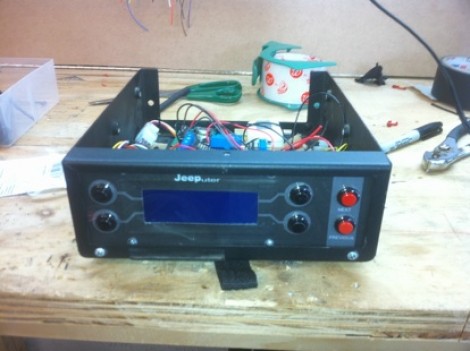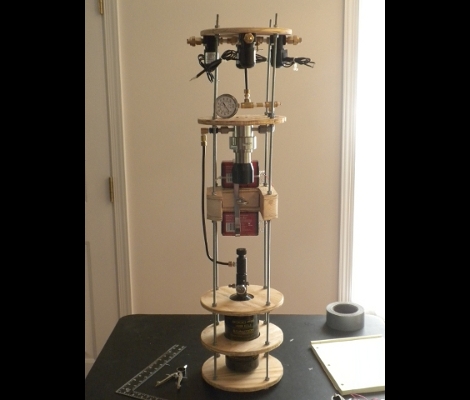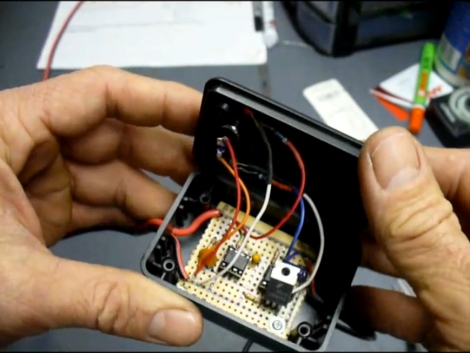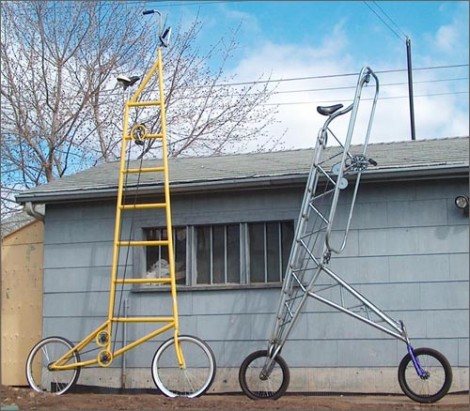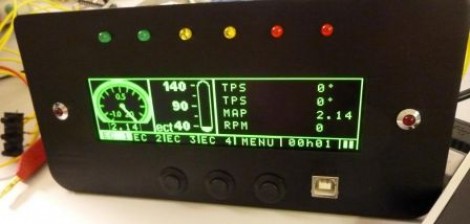
Is there a place in the dashboard of your high performance automobile for this Engine Control Unit feedback panel? There’s several methods of showing information at work here. The row of LEDs at the top of the bezel provide RPM feedback. The two red LEDs with chrome bezels are alarm indicators. But that big OLED display is the centerpiece of the unit. Not only can you scroll through a myriad of display options, but the screen packs more than enough contrast to be readable during the day. It looks like [Mathieu] is selling these units and has decided not to release source code because of this, but there’s a schematic available and a video after the break shows the menu system from which you can draw inspiration.


